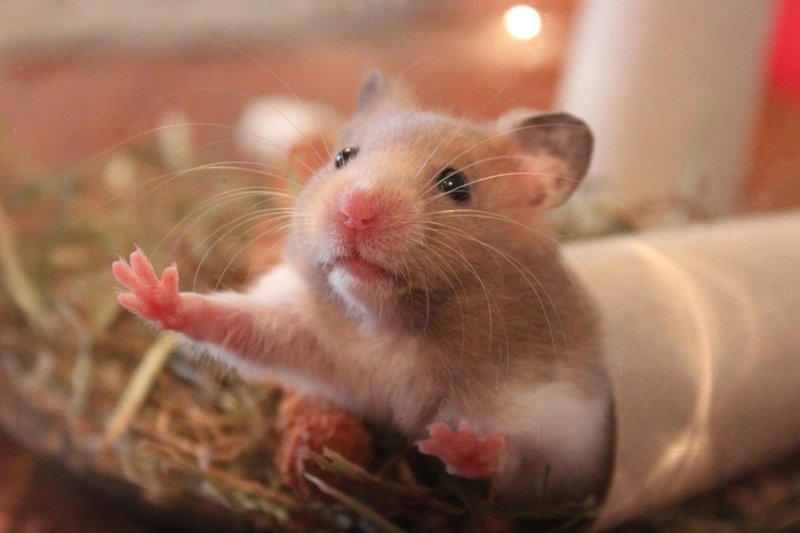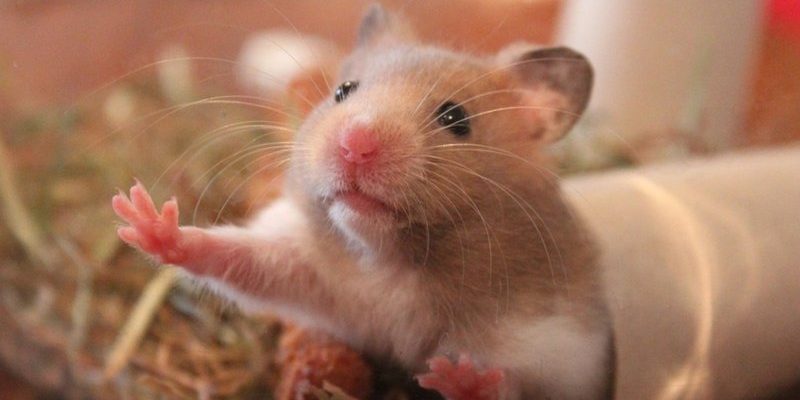
So, what should new owners keep in mind before diving into the world of hamster breeding? From understanding the right conditions for breeding to knowing how to care for young pups, this guide will walk you through everything you need to know. Let’s explore the ins and outs of breeding Black Bear hamsters in a way that’s easy to digest—like a good piece of cake!
Understanding the Black Bear Hamster
Black Bear hamsters, also known as Syrian hamsters, are one of the most popular pet hamster breeds. Their glossy, dark fur and friendly demeanor make them appealing to new pet owners. But did you know they can also be quite territorial? These little guys are solitary creatures in the wild, which means they prefer their own space.
When it comes to breeding, understanding their behavior is crucial. Hamsters reach sexual maturity at about 4 to 8 weeks old, but it’s best to wait until they are a bit older—around 4 to 6 months—to breed them. This ensures they’re physically ready for the responsibilities of parenthood. Honestly, you wouldn’t want a teenager raising kids, right? The same goes for hamsters.
A healthy environment is vital for breeding success. They need a spacious cage, clean bedding, and plenty of hiding spots. Imagine a cozy little home where they feel safe and secure; that’s what you want to create.
Preparing for Breeding
Before you can start breeding your Black Bear hamsters, you need to prepare. This means setting the stage in more ways than one. First, you’ll want to select a healthy male and female. Look for signs of good health, like shiny fur and a curious attitude. If they seem lethargic or disinterested, it’s best to reconsider.
Next, think about their habitat. You’ll need a spacious cage, ideally 24 inches long for a couple of hamsters. Include tunnels, hiding spots, and chew toys to keep them engaged. Here’s the thing: a happy hamster is more likely to breed successfully. If they’re stressed or bored, it can affect their willingness to mate.
Also, make sure you have the right food. A high-quality hamster diet, supplemented with fresh veggies and occasional treats, helps keep them in tip-top shape. Remember, quality nutrition goes a long way—much like giving your cake the best ingredients.
The Breeding Process
Once your hamsters are ready, it’s time for the exciting part: breeding. This usually happens at night since hamsters are nocturnal. Don’t be alarmed if the first attempts fail; it can take several tries for them to get the hang of it.
When introducing the male to the female, create a neutral environment. This means a place that neither hamster considers home. If they seem aggressive or overly territorial, separate them and try again later. Patience is key here; just like in any relationship, sometimes you need to give them a little time to warm up to each other.
If the mating is successful, you should see signs after a couple of weeks. The female might become a bit more secretive and will prepare a nest. During this time, it’s best to be hands-off. Just let her do her thing and ensure she has everything she needs to feel secure.
Caring for the Expecting Mother
Caring for a pregnant Black Bear hamster is crucial. Just like humans, they need extra TLC during this time. Ensure she has a comfortable, clean space to nest. Avoid picking her up too frequently, as this can stress her out and lead to complications.
Proper hydration and nutrition are essential now more than ever. Make sure she has access to fresh water and plenty of high-quality food. If you can, add extra protein, like small bits of boiled egg or mealworms, to support her developing pups.
Here’s the thing: if you see her becoming aggressive or overly protective, back off. It’s a natural instinct for her to guard her territory, and the last thing you want to do is cause her stress.
Welcoming the New Pups
After about 16 to 18 days of pregnancy, the big day will finally arrive! The mother will give birth to a litter of 4 to 12 tiny pups. Newborn hamsters are incredibly small—like little pink jelly beans with no fur and closed eyes. It’s fascinating to watch them grow, but keep in mind that they need the mother’s care during those first few weeks.
Make sure to provide a calm environment. Stay away from the cage as much as possible to avoid stressing the mother. She’ll do the majority of the work, but you should still monitor her health and the safety of the pups. If you notice any issues, don’t hesitate to consult a vet for advice.
As the pups grow and start to explore, they’ll become more active. This is when you’ll begin to notice their personalities shining through. It’s an exciting time, and watching them develop is one of the most rewarding aspects of breeding.
When to Separate the Pups
Around 3 to 4 weeks after birth, it’s time to start thinking about separating the pups from their mother. By this age, they’ll be weaned and starting to eat solid food. Ideally, males and females should be separated at this point to prevent any accidental breeding.
You might be wondering how to tell which ones are boys and which are girls. Generally, the distance between the genitalia is greater in males than in females. If you’re unsure, it’s best to consult a vet or experienced breeder for help.
Once separated, each hamster should have its own space. A smaller cage per hamster is ideal since they can still be young and might not yet be ready to handle larger territories. Keep an eye on their interactions, as they can be territorial early on.
Common Challenges in Breeding Black Bear Hamsters
Breeding Black Bear hamsters can be a delightful journey, but it’s not without its challenges. One common issue is infertility in either the male or female. If you find that they’re not mating, it could be due to health problems or stress. Keep an eye on their health and consult a vet if needed.
Another challenge is aggression, especially between males. Hamsters are territorial by nature, and they might not get along, particularly as they mature. If you notice fighting, it’s important to separate them right away. Aggression can lead to serious injuries if not managed properly.
There’s also the issue of overpopulation. If you’re not careful, you could end up with more hamsters than you can handle. Make sure you have a plan for the pups, whether it’s finding good homes or keeping them as pets yourself.
Breeding Black Bear hamsters can be an incredible adventure filled with learning and joy. It’s a process that requires careful planning, understanding, and a lot of love. By preparing adequately, creating a comfortable environment, and keeping a close eye on your pets, you’ll be better equipped to handle whatever comes your way.
Remember, breeding isn’t just about producing more hamsters—it’s about understanding their needs and ensuring they thrive. Embrace the journey, and don’t hesitate to seek advice from experienced breeders or veterinarians when you need it. With patience and care, you’ll create a healthy and happy home for your furry friends and their adorable little ones!

